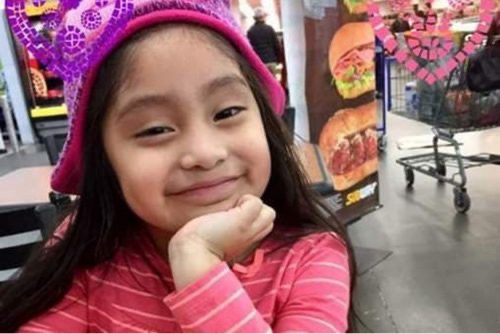Dulce Maria Alavez was only 5 years old when her mother, 19-year-old Noema Alavez Perez, saw her for the last time. April 25th marked Dulce’s 7th birthday and Noema has yet to see her child.
This nightmare began on September 16, 2019, when Noema took her children and her eight-year-old sister to a local park close to their home in Bridgeton, New Jersey. Noema allowed her 3 -year-old son and Dulce to run ahead to the park while she sat in the car helping her sister finish her homework. When she looked up to check on her children she only noted her 3-year-old, crying and alone. Her son, a non-verbal toddler, was distraught and unable to inform his mother of what had occurred. The only witnesses at the park that day were a couple of pre-teen girls who did not have much to bring forward. Their accounts of the incident pointed to a possible abduction. From their accounts, they saw a man in the park but did not seen him physically take Dulce.
A sketch of this man possibly involved in Dulce’s disappearance was given to authorities but no solid leads appeared. The area where Dulce disappeared was searched by authorities and volunteers thoroughly and her picture was sent to various agencies. To this day no trace of Dulce has been found.

Dulce’s case remains open. The National Center for Missing & Exploited Children has rendered an age-accelerated picture of what Dulce Maria would look like today. The public’s reaction was often one of criticism towards Dulce’s mother and her parenting, or lack of, skills.

While this is a nightmare scenario for any parent, the public’s reaction was one of criticism towards Dulce’s mother and her perceived lack of parenting skills. A Dr. Phil special brought some attention back to the case, but rather than focusing on the facts of the case, the tone of the interview cast further doubt on Dulce’s mother as the one responsible for her daughter’s disappearance. Speculations on whether Noema or her family were involved in her disappearance have been continued to be made by the public and by authorities, but so far has not proven factual.
While we may never know what happened to Dulce Maria or the cause of her disappearance- this leads to a deeper issue within American society. Specifically how we disparage and malign the families of missing black and brown kids. The idea that it’s the communities who are at fault for crimes and not a larger system that has denied such communities resources, education, and equity is visible in the public’s treatment of Dulce’s mother.
Noema was a teenage parent with a language barrier, and many in their community are undocumented.
That leads to a fear of authorities and any criticism from society. Undocumented communities often live in fear of authorities and face much criticism from society. This fear and ostracization can hold people back from coming forward with information on crimes, make them more vulnerable to becoming victimized, and leads to lower resource allocation to combat and solve crimes in such communities.
A National Problem
The National Crime Information Center reports statistics on missing children* by dividing them into five different groups: Asian, Black, Indian, Unknown, and White. This database groups Hispanic (Latinx) children and White children together. Why is this problem? According to the report, we don’t actually know how many children in the “White” category are Caucasion versus how many are Latinx. In summation: we don’t know how many Latinx children are missing.
Not tracking or releasing data for non-White Latinx children spreads the belief that more White (non-Latinx) children are missing versus those from Black or brown communities. This problem contributes to the belief that the White population in the US are higher victims of crime than any other group. Other reports, namely those from the National Center for Missing and Exploited Children (NCMEC) report around 20% of missing children are Hispanic/Latinx.
The vice president of the Missing Child Division at NCMEC, Robert Lowery, has stated the real number is likely higher.
In addition, grouping White and Latinx children leads to further injustices for Black and brown communities, as fewer resources and media attention are given to finding its missing children. Media attention on missing children’s cases is vital to helping spread awareness of the case. Public opinion and pressure on authorities can create more action and a wider audience may add more resources and leads needed to help push the case forward.
Ultimately, what can we do? We know our communities best and sharing information is integral for the safety of our people. Come forward if you’ve seen or heard anything. If you feel unsafe sharing information with the proper authorities, let a member of your community contact the authorities for you or send an anonymous tip. Each state has specific acts and laws to protect those who come forward with information on a crime. Multiple immigrant rights organizations can also help.
Only we can help keep us safe and found.
In our corner, we will continue to do our part to shine a light on our people’s stories. Like Lesly Palacio, Dulce Maria, and so many others, our community deserves to be seen, heard, and found.
Other things you can do to help:
- Share posts of any information on social media of people missing in your community.
- Keep the story alive by connecting your following to the events; it doesn’t matter if you have 2 followers or 2 million, the goal is to keep the word out there.
- Use the hashtag #seethemknowthem to spread awareness.

*for purposes of this report this means anyone aged 17 and under




